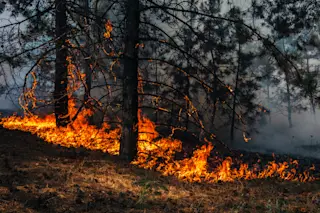Since early April, Wisconsin has been under a state of emergency because of wildfires. The Department of Natural Resources asked residents to be careful about off-road vehicles or consider delaying campfires, all because an unusually large number of fires have blazed over an unusually large amount of land. So far this year, 668 fires have consumed 1,880 acres. For comparison, an average of 618 fires and 1,007 acres burned each year from 2015 to 2020.
If the blazes in Wisconsin weren’t on your radar, that doesn't surprise Amanda Carlson, a landscape ecologist studying wildfire at the University of Wisconsin–Madison. “I think there's a good reason why Midwest fire doesn't get as much attention,” she says. “I don't think we're really going to start experiencing the types of really large fires that you see out west anytime soon.” But these Midwestern flames come with their own concerns, and the uncertainty around ...














